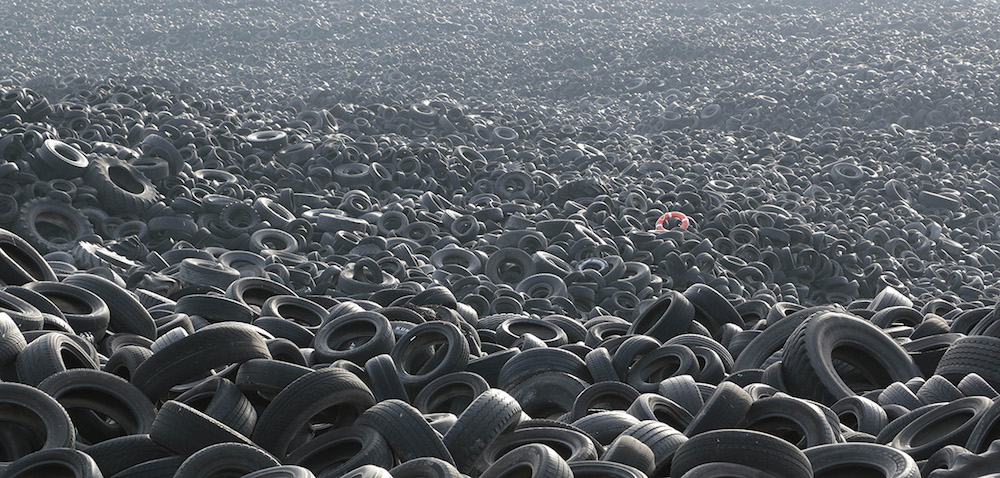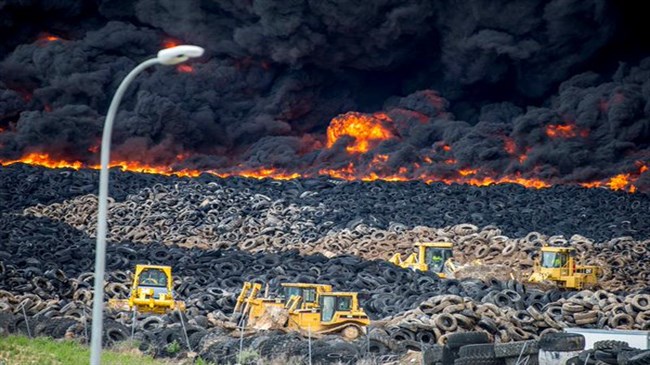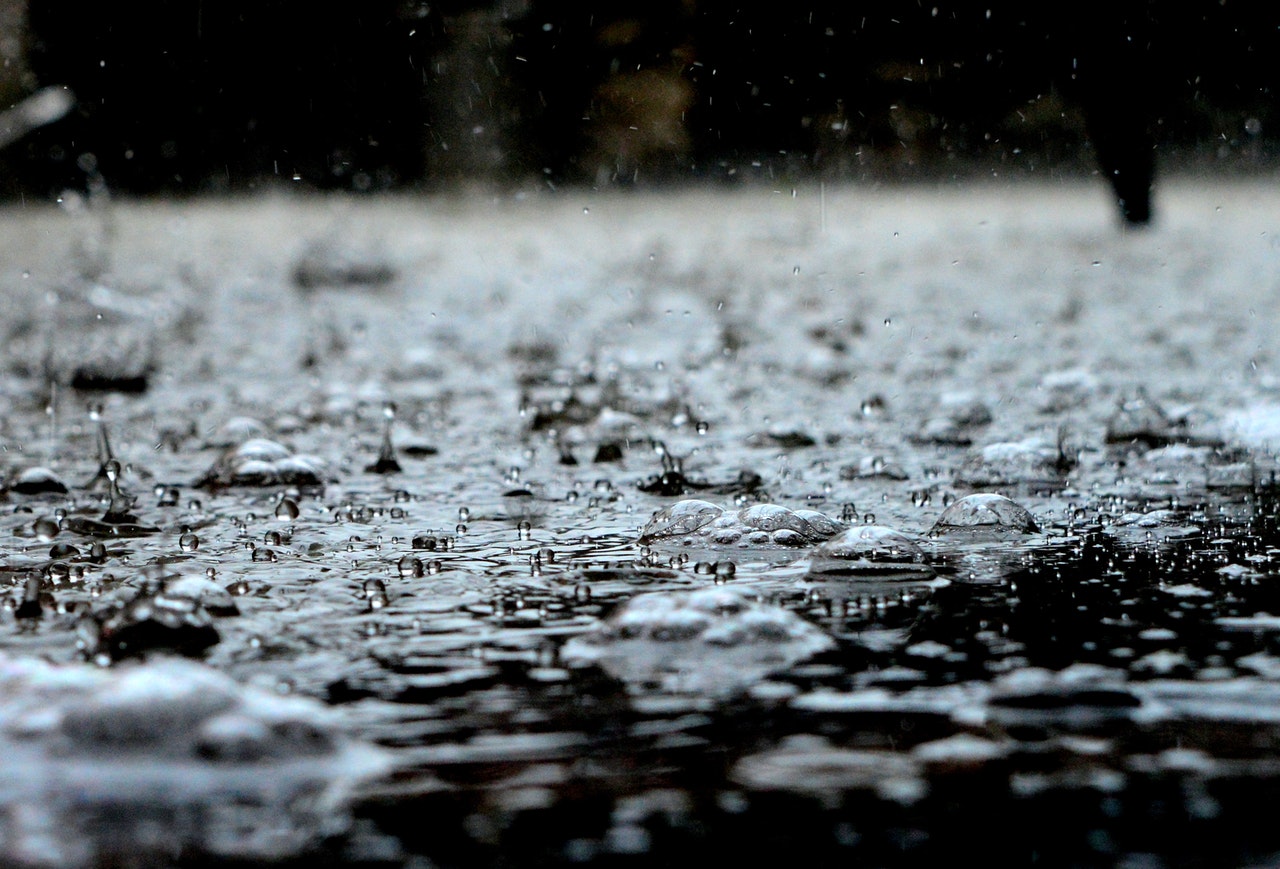Global Waste Tire Resource

Global production of tires each year is an average 1.5 billion new tires. The U.S. is the largest producer of ELTs alone, produced an average 290 million tires per year. The problem of scrap tires is far worse in the USA than in Europe. In the USA, an estimated 303 million waste car tires are generated each year in the USA alone, one tire per person per year. Tires are not biodegradable, therefore need to be recycled and repurposed rather than discarded in seas of tire dumps around the globe, but efforts are being made to deal with the problem. One of which is where Waste Tires are burnt as a fuel source for generating power, largely in the cement industry, but is very inefficient, not to mention produces questionable levels of emissions. Incineration of tires requires higher temperatures than coal and produces 25% more energy, the downside, burning a ton of tires produces almost the same amount of carbon.
Even though incineration, other than the devastating 2 yearlong fire you see in this picture, happens under carefully controlled conditions and is used to supplement traditional fuels — helping to reduce dependence on fossil fuels and keep scrap tires out of landfills — it is hardly a sound strategy for Waste Tire Reduction, nor is it eco-friendly. irri-CURB™ is a state of the art, Eco e-smart WiFi and App controlled irrigation/reticulation curbing system all-in-one. Our company is using the past to change the future. By using waste resources, we are creating high tech molded products, irri-CURB™ curbing and irri-CURB™ and irri-GROW™ components are manufactured from recycled waste rubber tires and plastics. We are focused on bringing as many products to market, for the industries we serve, from these very waste resources.
yearlong fire you see in this picture, happens under carefully controlled conditions and is used to supplement traditional fuels — helping to reduce dependence on fossil fuels and keep scrap tires out of landfills — it is hardly a sound strategy for Waste Tire Reduction, nor is it eco-friendly. irri-CURB™ is a state of the art, Eco e-smart WiFi and App controlled irrigation/reticulation curbing system all-in-one. Our company is using the past to change the future. By using waste resources, we are creating high tech molded products, irri-CURB™ curbing and irri-CURB™ and irri-GROW™ components are manufactured from recycled waste rubber tires and plastics. We are focused on bringing as many products to market, for the industries we serve, from these very waste resources.
Saving our Globe

Water Wise
The average American family uses 320 gallons of water per day, about 30 percent of which is devoted to outdoor uses. More than half of that outdoor water is used for watering lawns and gardens. Nationwide, landscape irrigation is estimated to account for nearly one-third of all residential water use, totaling nearly 9 billion gallons per day. Outdoor water use varies greatly depending upon geographic location. In dry climates such as the Southwest, a household's outdoor water use can be as high as 60 percent.
Some experts estimate that as much as 50 percent of water used for irrigation is wasted due to evaporation, wind, or runoff caused by inefficient irrigation methods and systems. The first downside to lawn reticulation is the difficulty of installation. Secondly repairs, sprinkler breakage is almost guaranteed, or damage to underground piping. Third, WATER CONSUMPTION! Per the U.S. Environmental Protection Agency's (EPA's), professional certified programs that use advance water–efficient irrigation techniques and practices, would result in homeowners each reducing irrigation water by 15 percent, which will save nearly 9,000 gallons annually per home.
irri-CURB™ reduces water usage by over 60%, using the 100% independent Eco-smart sprinkler control through the Intelligent User Platform [IUP]. By determining soil chemistry, atmospheric humidity, weather conditions, and ground layout, surface and sub-surface sensors, the system will save each household an average of over 21,024 gallons annually per home. Acting like a thermostat for your sprinkler system, water wise irrigation controllers need to tailor watering schedules to local weather conditions. The average family can save thousands of gallons of water annually by replacing standard timer controller with automated water wise labeled models. The EPA is now also considering developing a specification for soil moisture-based control technologies, which water plants based on the amount of moisture in the soil and adjust irrigation schedules accordingly.
